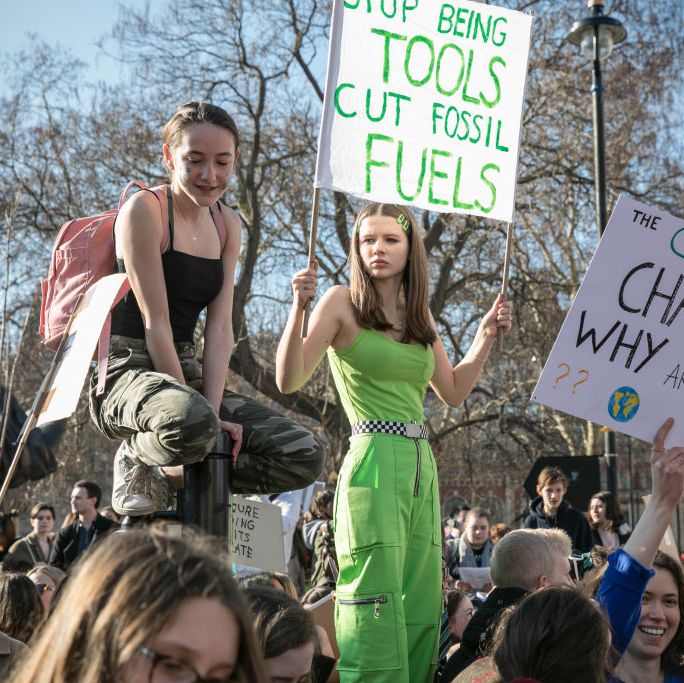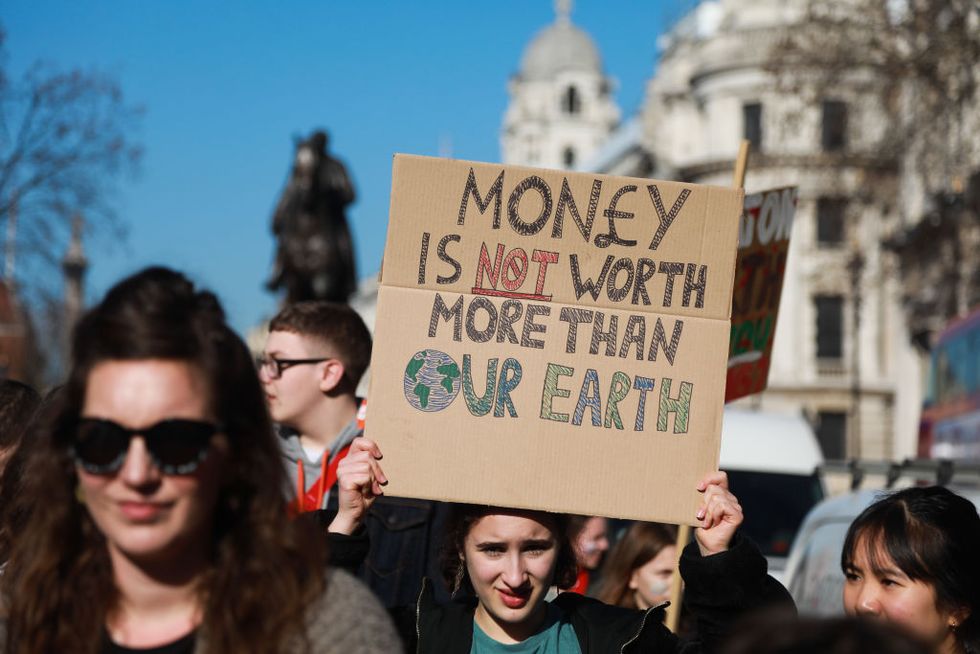You've probably heard the name Greta Thunberg by now. The 16-year-old has just been nominated for a Nobel Peace Prize. She was also named one of TIME's Most Influential Teens of 2018.
Why? Well, every Friday for the past 7 months, the 16-year-old has skipped school in Sweden to protest outside the country's parliament building. Her aim? She's demanding action against climate change, and she's not letting anything get in her way.
Thunberg’s 'school strikes for climate' – or #FridaysForFuture – movement has inspired thousands of students in the UK, Belgium, Uganda, Thailand, Germany and Australia (to name a few) to follow her lead.
In February, students skipped school to demand that their governments act against climate change. Just one month later, thousands will do the same again - only this time on a bigger scale.
Students in nearly 100 countries – and more than 1,200 cities – around the world plan to join the strike in what might turn out to be the largest environmental protest in history.
She might only be 16, but underestimate Thunberg at your peril. At the World Economic Forum, she told the global elite they were to blame for the climate crisis. She also delivered a damning speech at the United Nations' climate conference, telling climate negotiators they weren't 'mature enough to tell it like it is.'
When and where are the strikes taking place?
The protests will be taking place in more than 90 countries tomorrow, on Friday March 15. For further information about upcoming strikes around the world, check out this map on the Fridays for Future website.
In the UK, the 'Youth Strike 4 Climate' is calling on the British Government to take stringent action on climate change. Roughly 64 towns and cities across the UK will see demonstrations from school and university students.
Locations vary depending on each city, so check out the Youth Strike 4 Climate Facebook group or Twitter for further information.
Why are they striking?
The planet’s average temperature has risen by roughly 1 degree Celsius. This might not sound like a lot, but the difference is visible.
Whether it's last summer's devastating Los Angeles fires or the warmest day on record in February (making Britain hotter than Ibiza), we now live in a world where extreme weather is a common occurrence.
A recent United Nations report found that we must cut greenhouse gas emissions in half by 2030 if we hope to avoid the most catastrophic climate impacts. By then, if no action is taken, global temperatures could rise as high as 1.5C.
In other words, world leaders have only have 11 more years to avoid disastrous levels of global warming, according to the UN report. Just what would 'disastrous levels' look like? The planet would be at greater risk of events like wildfires, floods, extreme drought and food shortages for hundreds of millions of people (again according to the UN report).
In an open letter published in The Guardian, a group of youth-led climate activists called climate change 'the biggest threat in human history'. They're taking matters into their own hands, 'whether you like it or not.'
The letter continues: 'We have the right to live our dreams and hopes the letter reads. Climate change is already happening. People did die, are dying and will die because of it, but we can and will stop this madness.'
What are students hoping to achieve?
The demands vary country to country, but one common theme is clear: to cut greenhouse gas emissions. Kids in the US want a radical transformation of the economy, including a national emergency declaration on climate change.
In the UK, protestors are demanding the voting age be lowered to 16, and our national curriculum addresses the 'ecological crisis' as a priority. Like the US, they also want the government to declare a climate emergency and take active steps to achieve 'climate justice'.
17-year-old Noga Levy-Rapoport, a pupil from Hammersmith, walked out of school in February.
She told The Evening Standard that the experience had been 'life-changing'.
'I thought: “This is important in terms of a show of solidarity and sending a signal. We are here to make our voices heard and we are not going to stop until you listen to us”.'
Noga will be attending tomorrow's demonstration and said 'nearly all' of her schoolmates are likely to attend.
One of Noga's main concerns is air pollution, describing it as 'incredibly concerning' and 'so worrying to see.' She would like to see the UK Government implement a climate change plan that mirrors the Green New Deal put forward by Alexandria Ocasio-Cortez in the US.
'I think [Ocasio-Cortez] is a great role model and an example to follow,' she said.
















